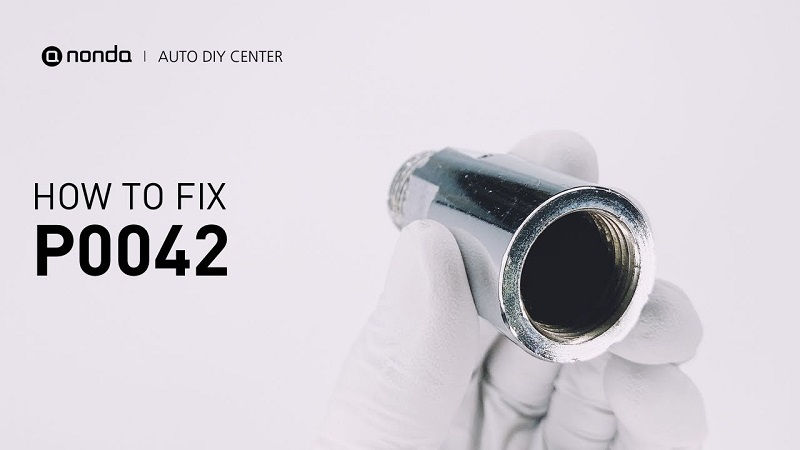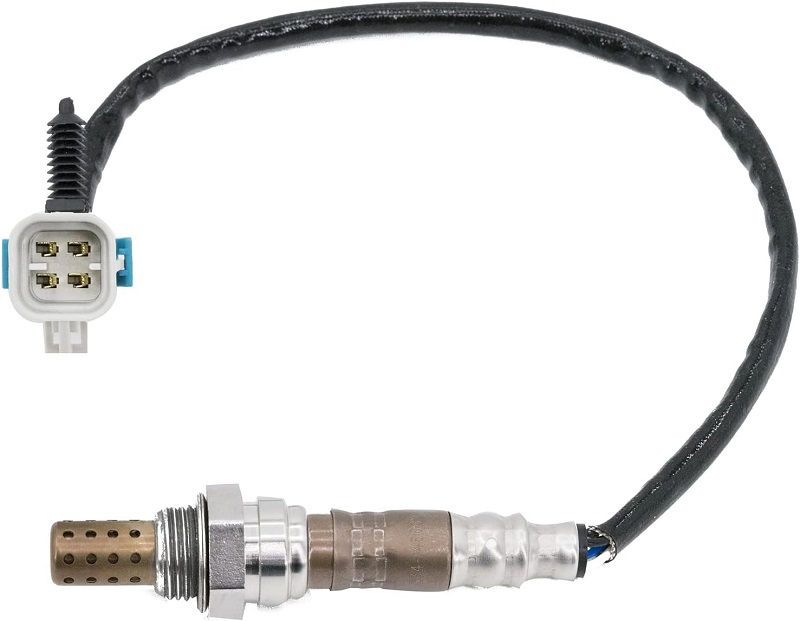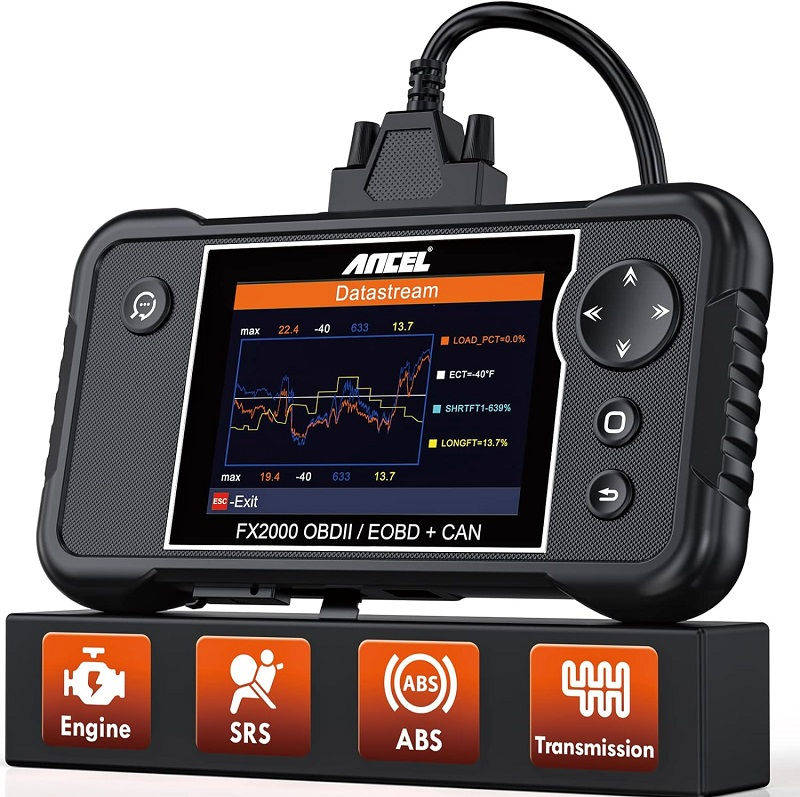This post contains affiliate links. This means I will make a commission at no extra cost to you should you click through and make a purchase [ “As an Amazon Associate, I earn from qualifying purchases.” ]. Read the full disclosure here.
Understanding P0042 HO2S Heater Control Circuit (Bank 1 Sensor 3) GuideMechanic.Com The automotive industry is continuously evolving, with advancements in technology improving vehicle performance, efficiency, and emissions control.
However, with these advancements come increasingly complex systems that require sophisticated diagnostics when issues arise.
One such issue that vehicle owners may encounter is the P0042 trouble code related to the Heated Oxygen Sensor (HO2S) Heater Control Circuit for Bank 1 Sensor 3.
See Also: P0040 Upstream Oxygen Sensors Swapped From Bank To Bank
P0042 HO2S Heater Control Circuit (Bank 1 Sensor 3)
What is P0042?

P0042 is a Diagnostic Trouble Code (DTC) that indicates a malfunction in the HO2S Heater Control Circuit for Bank 1 Sensor 3.
In simpler terms, it means that there is a problem with the heating element of the oxygen sensor located in the exhaust system of the vehicle.
Understanding the Oxygen Sensor
Before delving into the specifics of P0042, it’s essential to understand the role of the oxygen sensor in a vehicle’s exhaust system. Oxygen sensors, also known as O2 sensors, monitor the oxygen levels in the exhaust gases.
This information is crucial for the engine control unit (ECU) to adjust the air-fuel mixture for optimal combustion efficiency and to reduce harmful emissions.
P0042 HO2S Heater Control Circuit (Bank 1 Sensor 3)
The Importance of the Heater Circuit

In modern vehicles, oxygen sensors are equipped with a heating element, which helps them reach operating temperature quickly. This is particularly important during cold starts when exhaust temperatures are low.
The heater circuit ensures that the oxygen sensor can start providing accurate readings to the ECU as soon as possible, enabling efficient engine operation and emission control from the moment the vehicle is started.
Bank 1 Sensor 3 Location
In a V-type engine, such as a V6 or V8, there are typically two banks of cylinders: Bank 1 and Bank 2. Bank 1 refers to the side of the engine where the number one cylinder is located.
Sensor 3 indicates the third oxygen sensor in the exhaust system of Bank 1. The numbering convention may vary depending on the vehicle’s make and model, but Sensor 3 is generally the downstream sensor located after the catalytic converter.
Common Causes of P0042

Several factors can lead to the triggering of the P0042 DTC, including:
Faulty Oxygen Sensor:
The most common cause is a malfunctioning oxygen sensor. Over time, the heating element or other internal components of the sensor may deteriorate, leading to a failure.
Heater Circuit Malfunction:
Issues with the wiring, connectors, or the heater circuit itself can prevent the oxygen sensor from reaching the required temperature. This can be due to corrosion, damaged wiring, or a blown fuse.
ECU or PCM Fault:
In rare cases, a malfunctioning Engine Control Unit (ECU) or Powertrain Control Module (PCM) can cause erroneous readings and trigger the P0042 code.
Exhaust System Leaks:
Leaks in the exhaust system before the oxygen sensor can introduce false air, affecting the sensor’s readings and triggering the code.
P0042 HO2S Heater Control Circuit (Bank 1 Sensor 3)
Symptoms of P0042
When the P0042 DTC is triggered, the vehicle’s onboard diagnostic system will illuminate the Check Engine Light (CEL) on the dashboard. However, there may be other symptoms associated with this code, including:
- Reduced fuel efficiency
- Poor engine performance
- Rough idling or stalling
- Increased emissions
Diagnosing and Repairing P0042
Diagnosing the root cause of the P0042 code requires a systematic approach and may involve the use of diagnostic tools such as a scan tool or multimeter. Here’s a general outline of the diagnostic and repair process:
Check for Other Codes:
It’s essential to scan for additional trouble codes that may provide further insight into related issues.
Inspect Wiring and Connectors:
Visually inspect the wiring harness and connectors associated with the oxygen sensor heater circuit. Look for signs of damage, corrosion, or loose connections.
Test Heater Circuit Resistance:
Use a multimeter to measure the resistance of the oxygen sensor’s heater circuit. Compare the readings to the manufacturer’s specifications to determine if the circuit is functioning correctly.
Test Oxygen Sensor:
If the heater circuit checks out, the next step is to test the oxygen sensor itself. This may involve checking the sensor’s output voltage or observing its response to changes in exhaust gas composition.
Inspect Exhaust System:
Check for leaks or damage in the exhaust system that could affect the oxygen sensor’s readings.
Replace Faulty Components:
Based on the findings of the diagnostic process, replace any faulty components such as the oxygen sensor, wiring harness, connectors, or fuses.
Clear Codes and Test Drive:
After completing the repairs, clear the trouble codes from the vehicle’s memory using a scan tool. Take the vehicle for a test drive to ensure that the issue has been resolved and that the CEL remains off.
Conclusion
See Also: P0041 Downstream Oxygen Sensors Swapped From Bank To Bank
The P0042 DTC related to the HO2S Heater Control Circuit for Bank 1 Sensor 3 is a diagnostic challenge that requires careful troubleshooting to identify and resolve.
Understanding the function of oxygen sensors, heater circuits, and exhaust system components is essential for diagnosing and repairing this issue effectively.
By following a systematic diagnostic approach, automotive technicians can address the root cause of the problem and restore the vehicle’s performance and emissions control capabilities.
- BMW Catalytic Converter Price: What You Need to Know - April 24, 2025
- Scrap Catalytic Converter Price - April 24, 2025
- Honda CR-V Catalytic Converter Price - April 24, 2025
